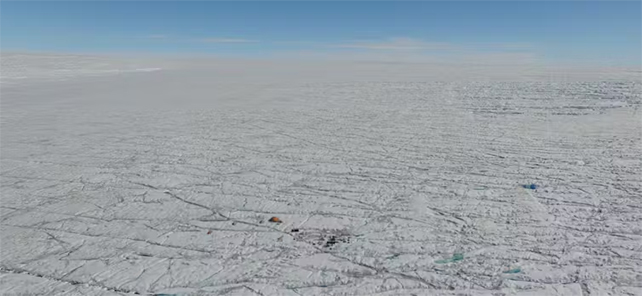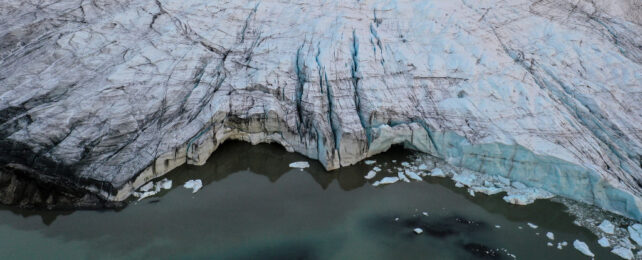It's hard to overstate how crucial Greenland, and its kilometres-thick ice layer, is to climate change. If all that ice melted, the sea would rise by about seven metres – the height of a house.
But what happens if we fail to limit warming to 1.5 °C (as looks increasingly likely)? And what happens if we do subsequently manage to rectify that "overshoot" and bring temperatures back down? A team of researchers writing in the journal Nature have now published a study exploring these questions.
In a nutshell, their work shows the worst case scenario of ice sheet collapse and consequent sea-level rise can be avoided – and even partly reversed – if we manage to reduce the global temperatures projected for after 2100.
Moreover, the lower and sooner those temperatures fall, the more chance there is of minimising that ice melt and sea-level rise.
We already know that the Greenland ice sheet is losing more than 300 billion cubic metres of ice per year, currently driving global sea levels up by a little less than a millimetre per year.
One major worry is that further warming could cross critical thresholds, sometimes referred to as "tipping points".
For example, as the air warms more ice will melt, lowering the elevation of the ice surface and hence exposing it to warmer air temperatures and more melting – even without continued atmospheric warming.
Although far more complex and nuanced in reality, it is feedback processes such as this which dictate that global warming be limited to 1.5 °C above pre-industrial levels in order to avoid catastrophes, such as wholescale ice-sheet collapse.
How to simulate a huge ice sheet in a computer
It is critically important that we are able to predict how the Greenland ice sheet will respond to future warming. To achieve this, researchers generally use computer models of ice motion.
In essence, these divide the ice sheet into tens of thousands of 3D segments and apply physical laws of ice motion to compute how each segment changes over thousands of individual time steps, factoring in things like anticipated climatic change, ice thickness, ice slope and the temperature of the ice interior and ice base.

However, these projections are subject to substantial uncertainties. It's tough to know exactly how ice moves over bedrock, or what its internal temperature might be. And the climate is made up of many moving parts.
Good news and bad news
The results are fascinating. If temperatures peak at 2 °C or so, and remain there, then the models – as expected – predict substantial ice sheet collapse after several thousands of years.
However, things change if warming is seriously mitigated post-2100. In those models, inertia in the ice sheet's response – a bit like the time it takes for a ripple to settle down as it passes across a pond – means that an overshoot is at least partly reversible as long as temperatures are quickly brought back down.
For example, if temperature stabilises by the year 2200 at less than 1.5 °C of warming, then the ice sheet should remain smaller than at present, but stable. This is the case irrespective of how far (within reason) peak temperatures overshot 1.5 °C in the year 2100. In such cases the sea rise would likely be restricted to a metre or so.
However, such a recovery becomes impossible if it takes too long to get temperatures down or if the convergence temperature remains too high. In those scenarios, ice-sheet collapse and substantial sea-level rise become all but inevitable.
Perhaps the very worst can be avoided then, if we continue to work to reduce global temperatures right through this century and next.
Although heartening to some degree, these projections are subject to substantial uncertainty and there is more work to do.
In this regard, the authors are at pains to note that their results are not necessarily specific predictions but rather provide insight into possible pathways.
Bryn Hubbard, Professor of Glaciology, Aberystwyth University
This article is republished from The Conversation under a Creative Commons license. Read the original article.
